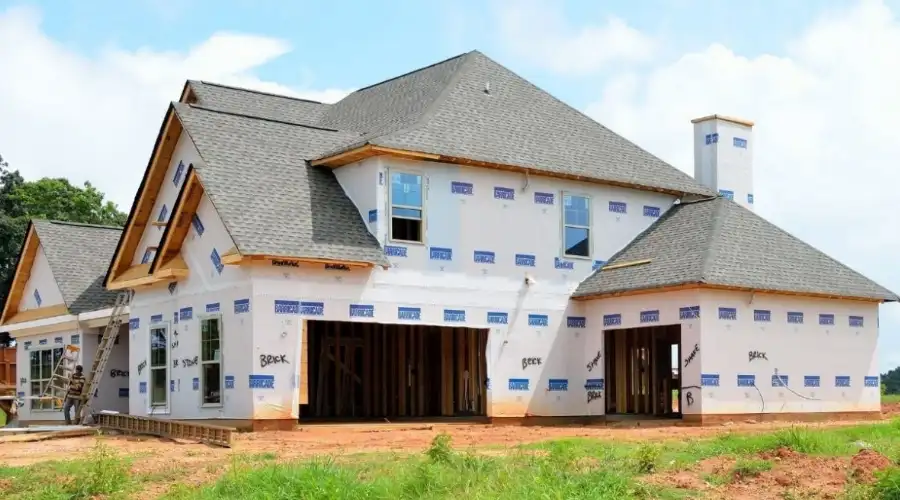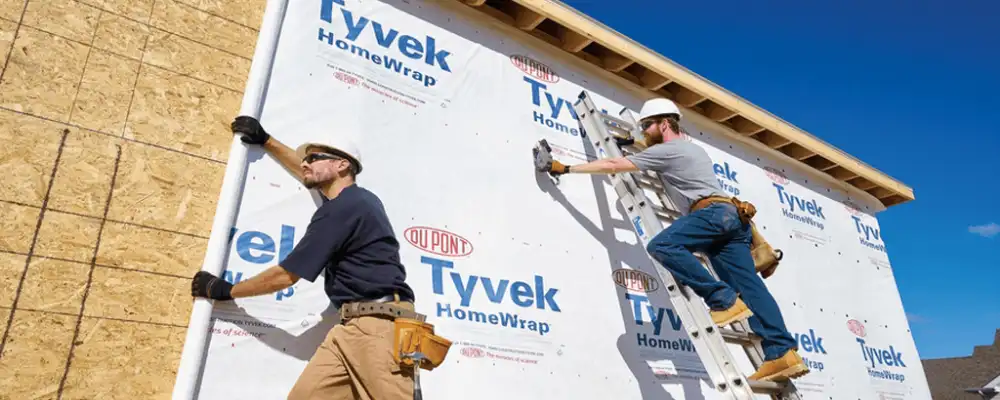A house wrap is a protective layer that is placed during construction in order to provide a building with protection against the external elements like wind, rain, and moisture while, at the same time, allowing the evacuation of water vapor. It is usually installed at the first parts of the building’s insulation or under the siding, and it guards the building from water outside that may enter the structure and thus lessens the occurrence of mold, rot, and structural damage.
Although house wraps don’t provide thermal comfort, they cut down much of the building insulation function, such as decreasing air tightly and saving energy. This, in turn, regulates the climate better inside the house; therefore, the temperature is adjustable.
House Wrap: What Is It?
House wrap is a term for a protective covering that is used in building construction, be it residential or commercial building, and functions as a shield from weather elements while allowing moisture to escape. House wrap is typically made of synthetic fibers like polyethylene or polypropylene, and its purpose is to serve as an air and moisture barrier when attached to the exterior side of walls, not to provide thermal insulation.
Besides moisture protection, it also serves to prevent water vapour penetration and create a constant dry environment in the walls, so to speak, drying from the inside. It is a common practice to maintain the energy efficiency of the living areas of the property.
Purpose and Importance of House Wrap
The main function of house wrap in today’s construction is the progressive provision of various benefits to the house; these are,
- Weatherproofing
Deflects wind, rain, and snow from entering the building and at the same time, keeps the moisture from the outside from entering the walls.
- Dampness Control
The dampness (water vapor) can leave the interior through the wrap and fewer such events could reduce the instances of mold, wood rot, and other moisture-related problems that result in the damage of the structure.
- Cost-Effective Energy Use
The primary function of house wrap is to act as an air barrier, helping to block drafts and support the effectiveness of insulation. It essentially serves as a thermal envelope, maintaining stable indoor temperatures, reducing heat loss, and minimizing energy consumption for heating or cooling.
- Durable Construction
Keeps the surface of the materials, like the siding and insulation, from harmful environmental factors, thereby increasing their lifespan. House wrap is the central figure in implementing the protection philosophy at the building level.
House Wrap Advantages

- Dampness Protection
House wrap serves as a moisture barrier that has waterproofing and prevents rain, snow, or humid air from entering the walls while at the same time allowing the vapor to pass through. This way, the risk of mold, rot, and the loss of the structure is significantly reduced.
- Improved Energy Efficiency
The function of a house wrap is an air stopper that ensures all the gaps are sealed and the air does not flow in or out of the building, thus the loss or gain of energy is greatly minimized.
- Provide Better Longevity
House wrap not only repels the fluids that potentially damage the insulation and the siding from the inside, but it also maintains the durability of the building by extending the materials’ life.
- Cost-Effective Solution
House wrap offers a cost-effective solution to improve energy efficiency by preventing air leaks and moisture infiltration. It enhances comfort, reduces heating and cooling costs, and protects the structure from external elements, providing long-term stability and energy savings.
Types of House Wrap Materials
The choice of material plays a major role in determining the overall performance of the building envelope.
1. Asphalt-impregnated Paper (Felt Paper)
This product was very popular in the past. However, it is not typically used in new building constructions today. It serves as a basic weather-resistant product, but in terms of durability and moisture control curves, it does not perform as well as new ones.
2. Micro-perforated, Cross-lapped Films
Such wraps contain minute perforations that allow limited water vapour transmission while keeping water outside. These wraps offer moderate breathability but are less water-resistant, particularly in windy conditions. This feature supports the type of air circulation that is both beneficial for health and suitable for maintaining the required ambient conditions.
3. Films Laminated to Spun-bond Nonwovens
Certain materials, like CertaWrap and Typar, are water-resistant and still allow moisture to escape. These products are stable and strong, which further assures that the outside moisture is not accumulated for a longer period.
4. Spunbonded Polyolefin (Tyvek)
Tyvek is made from spunbonded high-density polyethylene fibers. It offers high vapor permeability and superior water resistance. Unlike perforated wraps, Tyvek allows water vapour to escape without letting liquid water in, which helps prevent mold and rot within wall cavities. Its balance of breathability and water resistance makes it a preferred choice in modern construction.
5. Drainable House Wraps
These wraps have incorporated drainage, which is a way to avoid the problem of entrapment. As a result, any moisture that is left behind the wrap can gradually move out. This is just one of the possible ways to provide an additional layer of safety against possible water damage by acting as a moisture barrier to the cavity of the wall.
How to Install House Wrap?
1. Prepare the Surface
Ensure that the sheathing is not only clean and dry but also free from debris. Inspect for any holes, gaps, or imperfections and use a sealant to fill them, preventing air and water from entering. This will ensure good adhesion and performance.
2. Install House Wrap from the Bottom Up
Begin at the bottom of the house and put the house wrap vertically as it is unrolled. Ensure it is 2 inches above the top of the footing so the water will flow down properly.
For producing a continuous barrier, horizontal overlapping should be at least 6 inches and the vertical at least 12 inches.
3. Secure the House Wrap
To fix the house wrap to the wall, use girths or nails at each 12-18 inches, and make sure the girths are not too loose but also not too tight. You can use either stapling nails or specialized nails that are designed for securing house wrap material.
4. Seal Seams and Joints
Adhere to the firm’s recommendations to apply tape to seal all the joints, edges, and seams. Learning how to tape will enable you to do it without mistakes, and you will not experience problems with leakages, as well as the wrap will perform well.
5. Install Around Openings
For the windows and doors, you need to make a Y-cut from one corner to the other on the wrap. The remaining part should be folded inwards and tacked or attached clockwise, ensuring all the edges are sealed water-tightly.
Conclusion
The proper installation of house wrap plays a crucial role in ensuring a home’s defense against weather-related damage. When applied correctly, starting from the bottom and working upward, with overlaps aligned and seams sealed around windows and doors, it forms an effective moisture and air barrier. This not only protects the structural integrity of the building but also reduces the risk of mold, rot, and energy loss. By maintaining a dry and insulated environment, house wrap enhances both comfort and energy efficiency. In modern construction, it stands as an essential layer that supports long-term durability and sustainability.

